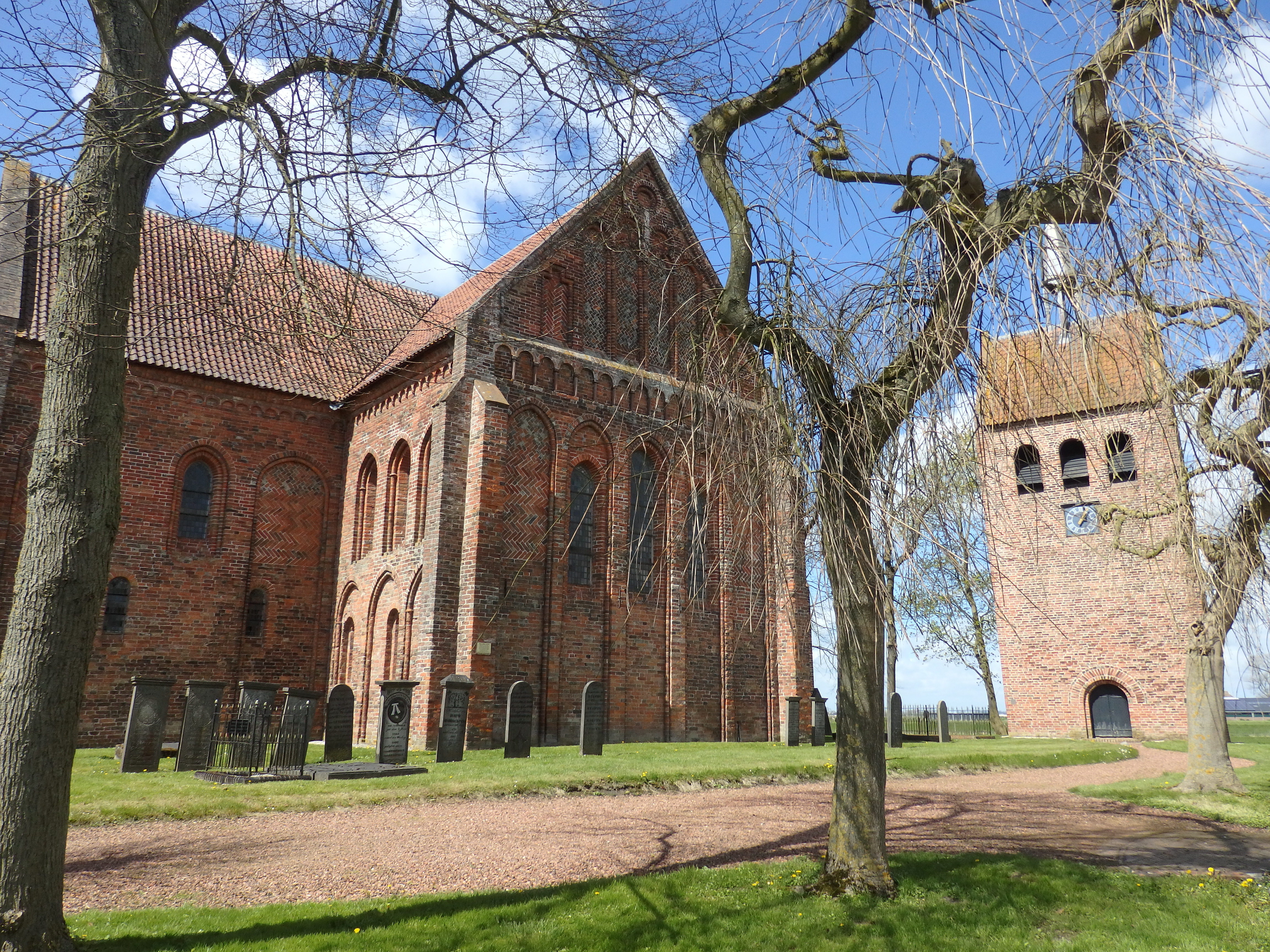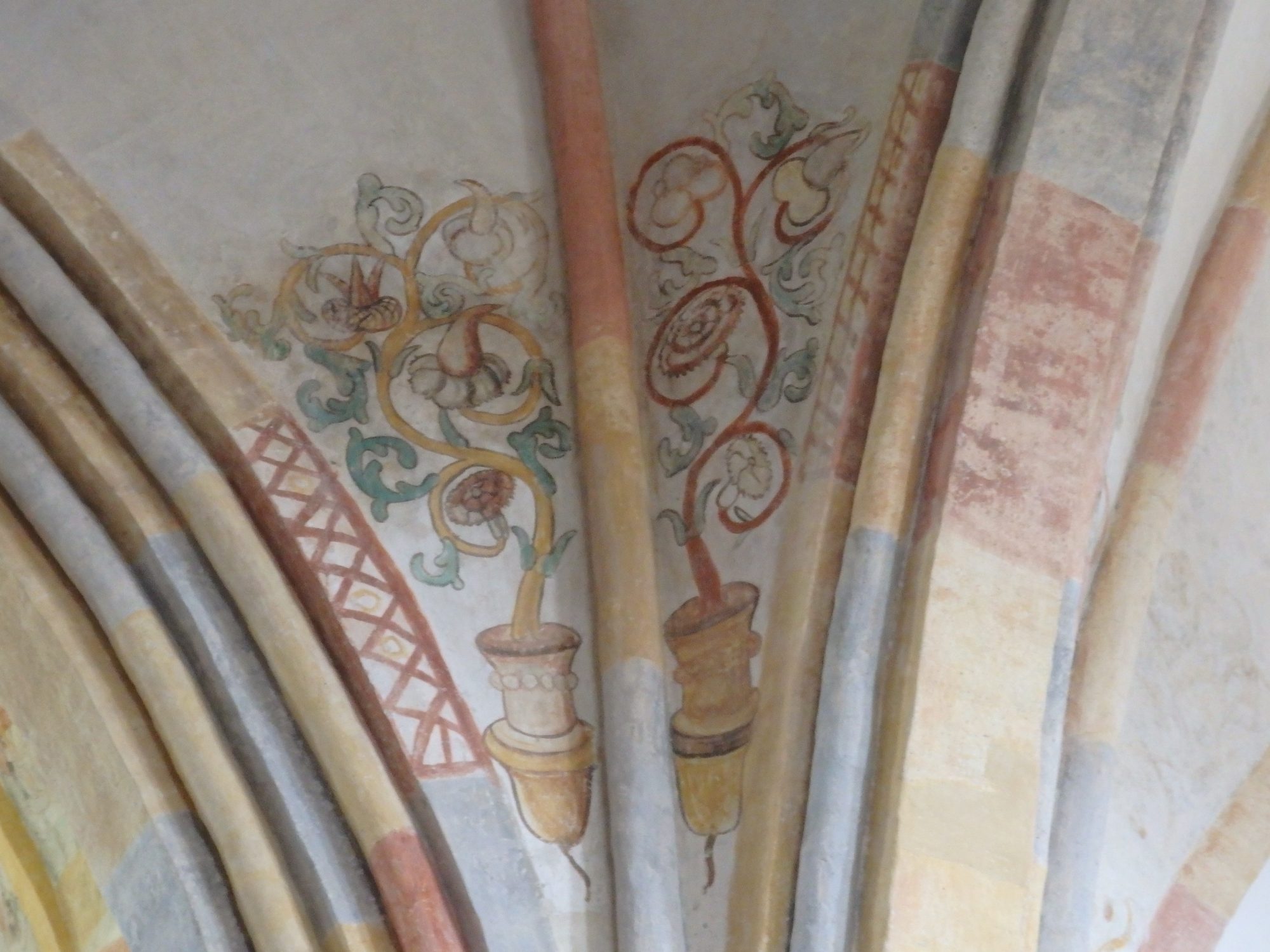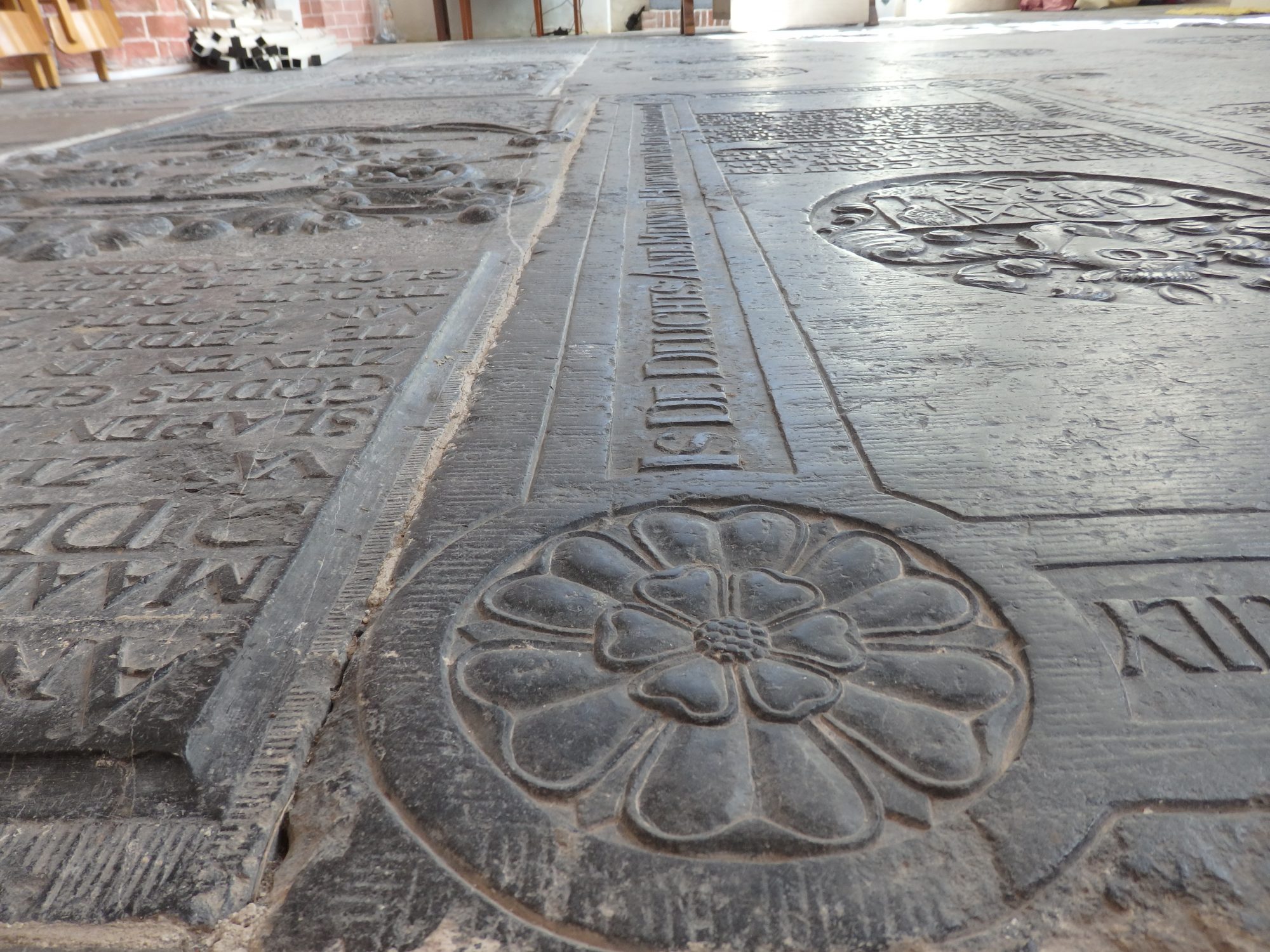Churches of Groningen province (part 1)
When I first arrived in the Netherlands back in 1997, one of the first bits of sightseeing I did, besides exploring my new hometown of Groningen itself, was to go on a driving tour of village churches in Groningen province.

The idea came from my favorite guidebook: the Michelin green guide to the Netherlands. The book—my copy dates from 1995, but that makes little difference when you’re visiting obscure historical sites—recommends a 118-kilometer (73 miles) driving route through Groningen province and lists 12 churches and a couple of port towns along the way.
Last week a friend and I wanted some distraction one afternoon, so we set out on this route again. I had vague memories of a beautiful countryside drive, but that was about it. We didn’t do the whole route, which is why this post is only part 1.
Garmerwolde
Michelin’s first stop, and ours, was Garmerwolde. This 13th century church is one of few with a separate belltower, which looks distinctly more recent than the church. Inside we could see the vestiges of 16th century frescos. In many of these medieval churches, the frescoes were painted over in the Reformation and have more recently been rediscovered during renovations.

Stedum
Stedum’s church is quite large and grand. Built in the 13th century, it’s mostly original except for general renovations, and also has some remnants of frescoes inside. Like several churches on the route, it’s usually locked, but you can ask for a key at one of the nearby addresses listed on the door. Be sure to lock it again and return the key before you move on.

40 things to see and do in Groningen province!
Loppersum
Loppersum church’s interior is big and light and airy, but somehow I didn’t find it as interesting as many of the others. The floor of one chapel is covered with memorial slabs from the 16th and 17th century. Do you know the origin of the term “stinking rich”? They could afford to be buried inside churches rather than outside in the churchyard, and worshippers suffered long afterwards as the stink of decomposing bodies filled the church.

Eenrum
As we were driving out of Loppersum, headed toward the next town, Zeerijp, we spotted another church tower and decided to check it out as well. The countryside here is very flat, and the villages are very small, with low-rise farms and houses. Just as was intended back in the Middle Ages, the church towers do just that: they tower above the villages.

This is accentuated by the fact that most churches were placed on wierden, also sometimes called terpen. A wierd is an artificial hill, built long before the Christian era to rise just above potential floods. Churches and the cemeteries next to them were added later on the existing wierden, but continued to be places of safety in a flood.
Eenrum was built in the last half of the 12th century and the tower was added in the 16th century. I don’t know why this one wasn’t in the guidebook, and I found it particularly charming because of its slight lean. Inside, the roof is supported on heavy wood beams, and recent renovations have revealed frescoes here too.

Zeerijp
Zeerijp’s church is the latest of the ones we visited, dating from the 14th century, and has a separate tower from the early 16th century. Go ask for the key at one of the addresses listed on the door (The word for key is sleutel.) and go inside to look at the ceiling.

It’s not the original paintwork, but it’s based on the original. You’ll see that each section of each dome is painted with a different pattern of imitation brickwork painted onto plaster, which covers actual brick.

The inside of the church, with the faux brickwork, dramatically placed 17th century organ, and Renaissance pulpit, creates an atmosphere of grandeur despite the church’s relatively small size.

Leermens
Another 13th century church with faux brick interior painting, Leermens sits on an unusually high and large wierd, so that much of the village is above the farm fields and above the ancient flood level.

Like many of these churches, a small graveyard surrounds it, with stones from the 19th and 20th centuries for the most part.

Oosterwijtwerd
I visited one more that wasn’t on the list in the book: Oosterwijtwerd. I presume it wasn’t included because the inside has been “modernized” over the years, with a stove and its stovepipe plunked down incongruously in the middle and an odd wooden paneled wall that was added in the 1800’s dividing the altar from the pews.

Nevertheless, the building itself dates from the 11th century, which makes it worth at least a brief stop.
Groningen Province
Despite my focus on medieval churches, I should also point out that the countryside we drove through is absolutely lovely. My gps sent us along narrow lanes, often with water-filled ditches lining both sides, through fields and past farmhouses and barns.

Farmhouses in Groningen province are generally a combination of barn and house. In the Middle Ages the farmers probably lived in the same space as the livestock. These days the houses are on one end, with the barn attached under a huge roof behind, if it hasn’t been repurposed in some way. Some of the smaller houses you’ll see were originally built for the farmworkers and don’t have barns attached. And of course many were built more recently.


Groningen province is green and quiet and extremely flat countryside. If you stop for a picture, the most you’ll hear is the wind through the corn or the bleat of a sheep. You might get stuck behind a tractor, but don’t get annoyed. Accept the slow pace and take in the scenery.

That’s the first half of our tour. I’ll venture into Groningen province again sometime soon to finish it. I hope you’ve enjoyed the trip!



I like to drive around lesser known, quiet areas like this. Plus, I like that there are plenty of interesting places to stop. Were all the churches open? Is there actually somebody on the grounds taking care of them?
I absolutely love the farmhouse in Groningen province. I’d like to eat in the converted restaurant, but the house itself looks so inviting with the tall thin windows. It would be a challenge arranging furniture within. the ceiling frescoes at Garmerwolde are quite beautiful and the aesthetic outside with the separate bell tower is charming. Love the Stinking Rich tale!
Glad you enjoy it! Once I get enough photos, I could do a post just on the farmhouses; each province has its own distinct style.
Beautiful countryside. I love doing drives like these and I enjoyed your tour.
Where I grew up in Jamaica is just above sea level. Our church is a bit higher so like folks in Groningen we take refuge there when there’s a flood. I wonder now if putting the church there was intentional.
Next time I hear the phrase “stinking rich,” I’ll definitely mention the origin. We noticed graves under a church we visited in Jamaica but I can’t recall ever hearing burials inside the church.
Many churches I’ve seen in Europe have graves covered with grave markers inside the church. The rich wanted to be buried as close as possible to God and they paid well for the privilege. I think churches get put on high ground partly for safety in floods, but also to be that much more impressive.
We travelled Groningen in the summer last year and had a good time exploring the coast. It’s such a peaceful country with happy people – we loved it a lot.
Nice slide show! Thanks!
Hi Rachel. I love the Groningen countryside! Thanks for educating me on the phrase “stinking rich” 🙂 Actually, it’s origin is kind of gross…haha. I loved the fact that you had to pick up the church key from one of the neighbors. Gives going into the church even a more personal feel. Thanks for co-hosting this week. #TPThursday
Kind of gross? It’s disgusting! These medieval churches must have been awful places in the middle ages: cold and smelly. The stinking rich plus the undoubtedly terrible body odor. And the common people had to stand; only the elders, etc. got pews.
Loved learning the origin of the term “Stinking Rich” and I had to laugh/grimace? thinking about all the kids who had to be dragged to church. Definitely a good reason to cut the service short! Thanks for the tour through the beautiful countryside of Groningen Province and the old churches. I enjoyed the glimpses inside and the frescoes were lovely!
Glad you liked it! Thanks!
I love those memorial slabs. I’ve seen them in Amsterdam but never in any other part of the world. Have you seen them anywhere else?
Yes, in France and Great Britain that I can remember. You often don’t notice them because they’ve gotten so worn down underfoot.
What a neat thing to do! I was taken aback when you wrote that you could pick up the key to the chuch, wander around, then lock it up and return the key! Only in Amsterdam, perhaps! I’ve never really used the Michelin Green Guides but it’s a super idea to take a journey using the guide. Great discoveries!
No, I doubt you’d be able to borrow the key in Amsterdam! But these churches are far from any city. The Michelin Green guides are focused primarily on history, art and architecture. Rather than giving advice, they mostly just list what there is to see, arranged in alphabetical order by place name. It would be worth just having one around for whatever country you live in.
Wow, these churches are absolutely beautiful. Sights like these are so surreal to see in person; it must be an amazing experience. It’s so amazing how a place can be well maintained for so many years and hold all of its beauty. Very nice post. Thanks so much for sharing!
Thanks, Morgan! At some point I’ll go ahead and do the second half of the tour!